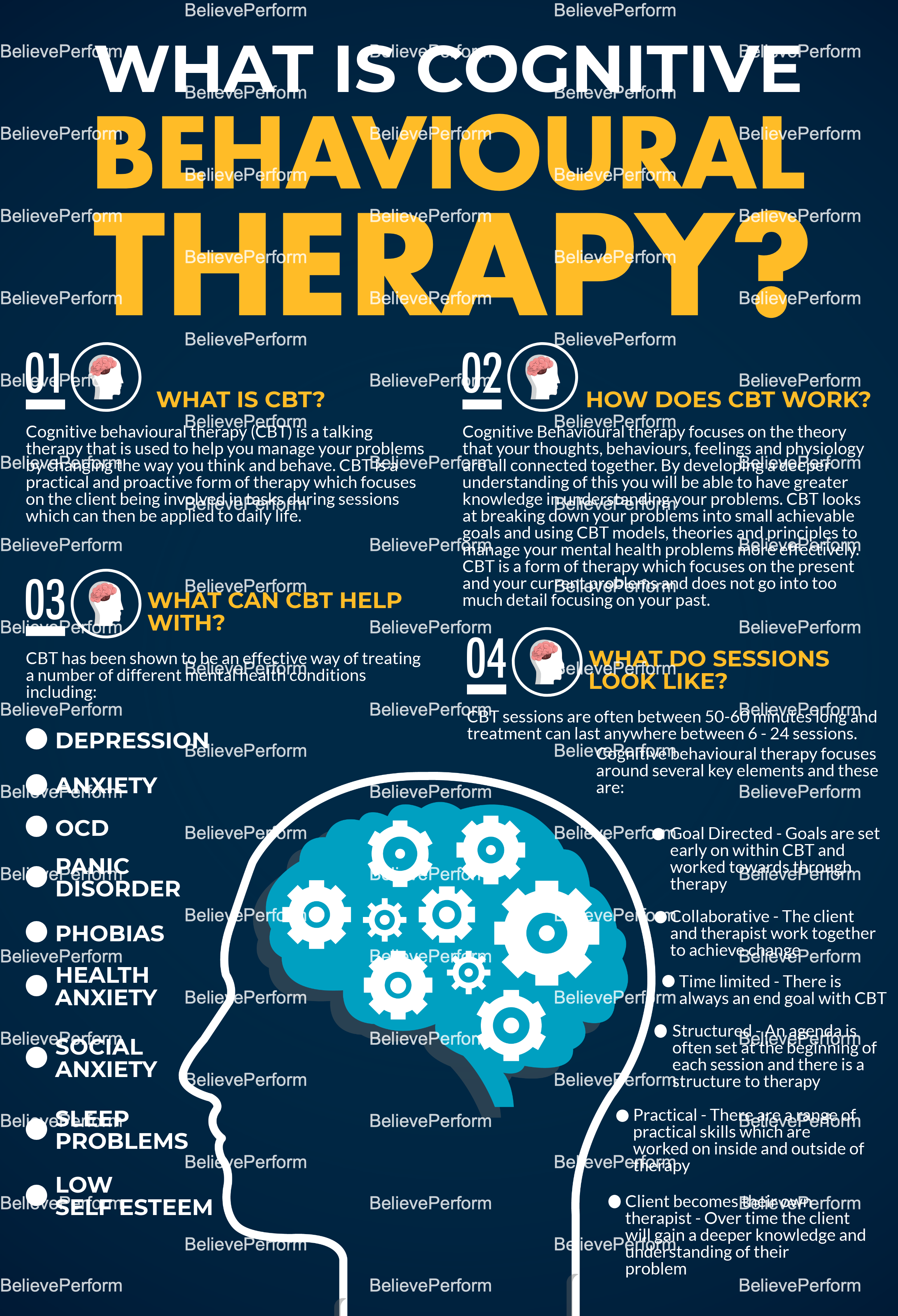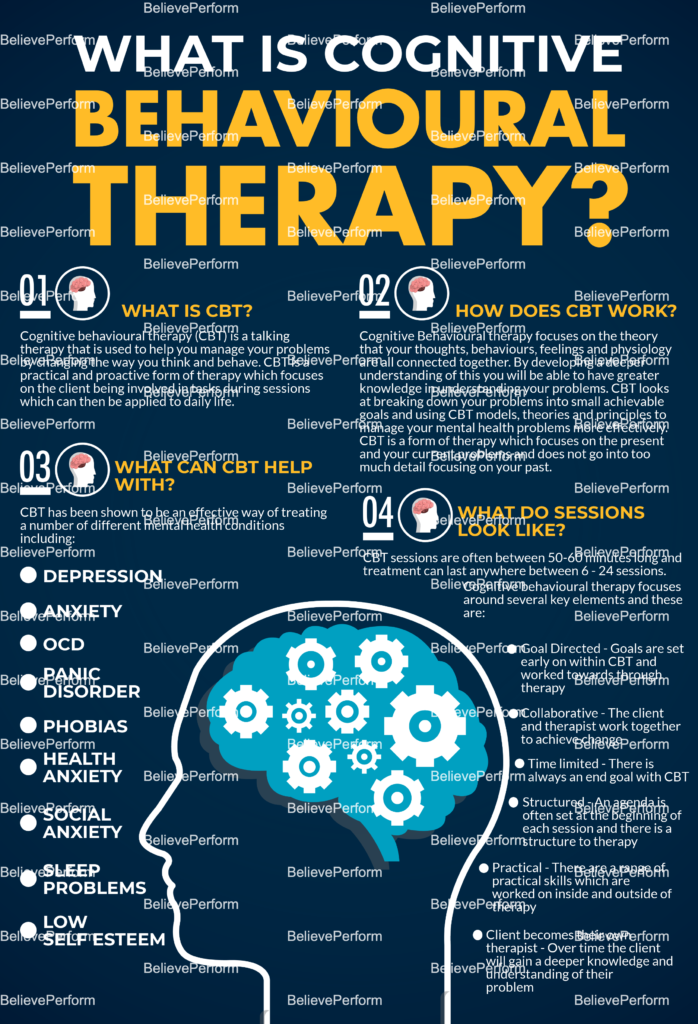In this mental health infographic we examine what Cognitive Behavioural Therapy (CBT) is and how it can be used to help people manage their problems through a form of talking therapy.
Categories: Mental Health Sign Up
This product is a digital download. Available to download for free with a membership.

 " />
" />
– Depression
– Anxiety
– OCD
– Panic disorder
– Phobias
– Health anxiety
– Social anxiety
– Sleep problems
– Low self esteem
CBT sessions are often between 50 – 60 minutes long and treatment can last anywhere between 6 – 24 sessions. Cognitive behavioural therapy focuses around several key elements and these are:
Goal Directed – Goals are set early on within CBT and worked towards through therapy.
Collaborative – The client and therapist work together to achieve change.
Time limited – there is always an end goal with CBT.
Structured – An agenda is often set at the beginning of each session and there is a structure to therapy.